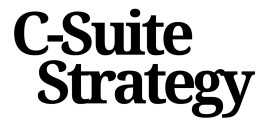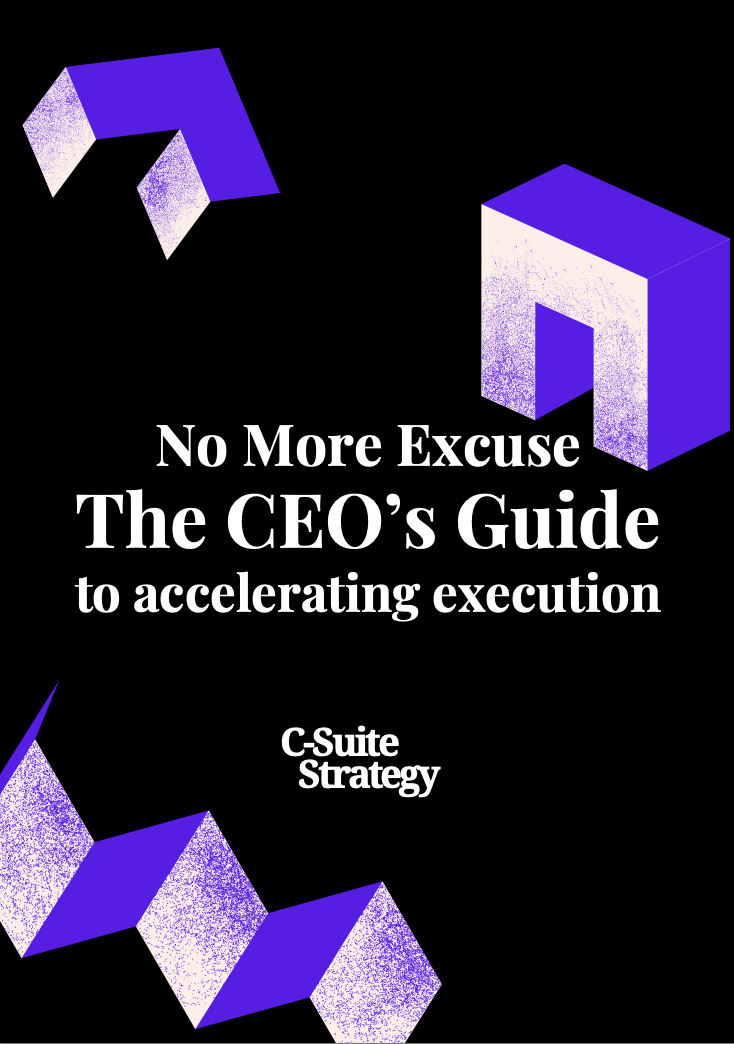
Understanding the Role of Executive Search in Strategic Leadership
Decoding the Strategic Role of Executive Search
In the sphere of leadership and talent acquisition, executive search stands as a pivotal component for driving strategic leadership across organizations globally. As companies strive to maintain a competitive edge, the push to identify and secure top executive talent becomes more intense. Leading search firms like Spencer Stuart are instrumental in this quest, leveraging sophisticated consulting services to pinpoint individuals capable of steering organizations towards enduring success. Executive search firms are not merely about filling board jobs with individuals who have impressive resumes. Their role extends far beyond that. They act as catalysts in aligning a company’s leadership needs with its strategic objectives, ensuring that appointed executives can not only meet the present demands but also anticipate future challenges. Engaging in executive search means tapping into extensive networks, industry insights, and nuanced understanding of business dynamics to identify those who can truly lead. For C-suite leaders, understanding the intricacies of this process involves recognizing how search firms can offer more than candidate placement. They provide leadership advisory and succession planning insights that can be instrumental in shaping the trajectory of a company. The right leader can drive forward strategic initiatives and lead the company in navigating complex business environments. Incorporating an executive search into a company’s strategic framework is about maximizing the impact of corporate leadership. This approach focuses on synthesizing leadership consulting, talent management, and organizational vision. By relying on the comprehensive expertise of firms like Spencer Stuart, companies can ensure that they have a strategic advantage in acquiring talent that fits seamlessly into their long-term vision. Moreover, understanding executive search can be further enriched through enhancing leadership with executive coaching, which complements the search process by preparing potential leaders to integrate effectively into the company’s culture and strategic goals. Together, these elements create a robust strategy for sustained leadership success.Key Challenges in Executive Search for C-suite Positions
Complex Dynamics of Executive Search for Top Leadership
The journey to securing the right leadership in today’s complex business environment is a multifaceted challenge, calling for strategic precision especially when it comes to executive search for C-suite positions. This pursuit is not only about locating the individuals with the right qualifications, but also involves an intricate assessment of their strategic fit within the company’s evolving landscape. The contemporary business terrain demands that search firms like Spencer Stuart excel in talent acquisition, going beyond the conventional evaluation of resumes. Companies need executives who can drive change and adapt with unprecedented agility, all while maintaining a firm grip on the intricate dynamics that propel a business forward. Some of the hurdles that emerge in this confluence of search and leadership decisions include:- Identifying Top Talent: Navigating through the global talent pool is a critical task. Search firms are tasked with not just finding the top executives, but those whose leadership styles are in sync with the future goals of the company.
- Skills and Cultural Alignment: While the necessary skills are non-negotiable, cultural fit and alignment with company values add another layer of complexity. It’s crucial to find executives who resonate with the organizational ethos.
- Responding to Company Dynamics: As businesses evolve, so do their leadership requirements. Succession planning and executive onboarding must adapt to meet these shifting needs swiftly and effectively.
Leveraging Spencer Stuart's Expertise for Strategic Advantage
Capitalizing on Specialized Knowledge in Executive Search
Navigating the complexities of C-suite recruitment requires more than just identifying candidates. It involves a nuanced approach to understanding the intricate dynamics of strategic leadership. Leading search firms, such as Spencer Stuart, offer an array of services that extend beyond traditional recruitment, which can prove pivotal to companies striving for optimum leadership. Spencer Stuart and other prominent firms like Korn Ferry and Egon Zehnder bring depth to the executive search by leveraging their global reach and extensive networks. These firms conduct rigorous evaluations to align the cultural fit and strategic vision of potential candidates with the organization's goals, thus enhancing business success. Their proficiency in leadership consulting provides an added edge in securing top talent. They not only assist in finding individuals who excel in board positions and critical business roles but also offer leadership advisory services that ensure these leaders can thrive once they assume their roles. Advanced succession planning and talent acquisition strategies further empower companies to maintain a future-ready leadership pipeline. Spencer Stuart's ability to deliver tailored solutions also stems from an intimate understanding of industry-specific trends. This expertise, paired with a commitment to maintaining a high degree of integrity and confidentiality, positions Spencer Stuart as a preferred choice for many firms aiming for a strategic advantage in executive search. For companies exploring the potential of augmenting their leadership teams with top-tier talent, harnessing the bespoke offerings of firms like Spencer Stuart is invaluable. As you assess the impact of executive search on your company’s strategic trajectory, consider how expert consulting services can bolster your pursuit of excellence. To further grasp the orchestration of leadership dynamics, understanding how top executive search firms operate can be crucial to mastering a seamless leadership transition.Evaluating Executive Candidates: Beyond the Resume
Looking Beyond the Resume for True Leadership Potential
In the high-stakes arena of C-suite placements, evaluating executive candidates goes beyond a cursory glance at resumes. While a CV can encapsulate a candidate's career trajectory and accomplishments, it rarely captures the comprehensive attributes necessary for top-tier leadership roles. When a company embarks on the executive search journey, the focus should be on identifying candidates who not only bring a strong track record but also align with the strategic vision and culture of the organization. This is where companies like Spencer Stuart and other leading search firms differentiate themselves by employing a nuanced approach to candidate assessment. It begins with a thorough understanding of the leadership dynamics specific to the client. Firms like Spencer Stuart delve into analyzing leadership styles, decision-making capabilities, and adaptability. Such insights are crucial, as the challenges faced by a board of directors and top executives often require bespoke leadership competencies. Key elements in the evaluation process include:- Cultural Fit: Understanding how a candidate will mesh with the existing leadership team is paramount. A strong cultural fit ensures seamless integration and minimizes the disruption that can accompany transitions.
- Leadership Advisory: Utilizing leadership consulting services helps in mapping the candidate's potential impact on the company's strategic trajectory. This advisory role extends beyond mere talent acquisition and into succession planning that aligns with long-term business goals.
- Behavioral Assessments: Comprehensive psychometric testing and situational judgment tests provide a deeper dive into a candidate's intrinsic qualities. These tools are instrumental in predicting how individuals might handle real-world challenges.
- Reference Checks: Beyond verifying the facts listed on a resume, reference checks provide valuable insights into a candidate's past performances and professional demeanor in complex situations.
Integrating New Executives into the C-suite
Seamlessly Transitioning Executives into C-suite Roles
Integrating a new executive into your company's top leadership structure can be a delicate and strategic process. The complexities in executive search don't end once the perfect candidate is chosen. Ensuring a seamless transition is critical to harnessing the talent and potential that a new leader brings to the board. To start, it's vital to foster a welcoming environment that encourages open communication. This requires collaboration with existing executive team members and stakeholders at all levels of the business. Creating a comprehensive onboarding plan is key, including:- Understanding Company Culture: Facilitate connections with multiple departments to help acclimate new leaders to the company's ethos and values.
- Role Clarity and Expectations: Clearly define responsibilities and anticipated contributions to align with the company's strategic goals.
- Feedback Loops: Schedule regular check-ins with not only superiors but also direct reports and peers to address any challenges early on.
Measuring the Impact of Executive Search on Company Performance
Assessing the Value of Executive Search Initiatives
In the realm of strategic leadership, the impact of executive search on company performance is a crucial metric. Companies invest significant resources in search firms like Spencer Stuart, Korn Ferry, and Heidrick Struggles to secure top talent for their C-suite positions. But how do these investments translate into tangible business outcomes?
Key Performance Indicators for Executive Search Success
To measure the effectiveness of executive search services, businesses often rely on a set of key performance indicators (KPIs). These KPIs help in evaluating whether the new executive hires are contributing positively to the company's strategic goals:
- Time to Fill: The duration it takes to fill a leadership position can indicate the efficiency of the search process.
- Quality of Hire: This involves assessing the performance and impact of the new executive on the company’s strategic objectives.
- Retention Rates: High retention rates of newly hired executives suggest successful integration and alignment with company culture.
- Business Performance Metrics: Improvements in revenue, market share, and other financial indicators post-hire can reflect the effectiveness of the executive search.
Long-term Strategic Benefits
Beyond immediate performance metrics, the strategic advantage of partnering with a global search firm like Spencer Stuart lies in their ability to align talent acquisition with long-term business goals. Their leadership consulting and succession planning services ensure that companies are not just filling jobs but are building a resilient leadership pipeline.
Moreover, the integration of new executives into the C-suite, as discussed earlier, is crucial for maximizing the impact of these hires. A well-executed onboarding process can significantly enhance the contribution of new leaders, thereby boosting overall company performance.
Conclusion
Ultimately, the true measure of an executive search firm’s success is reflected in the sustained growth and competitive edge it helps its clients achieve. By focusing on strategic leadership and leveraging the expertise of firms like Spencer Stuart, companies can ensure that their executive search efforts yield substantial returns on investment.














